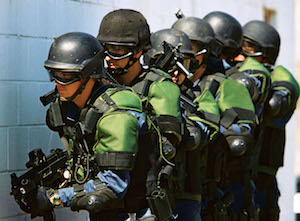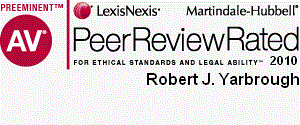Newsletter Issue 43 - September 2012
In this issue:
Trade dress
Copyright for fashion
Challenge to a patent application
Ask Dr. Copyright
Dear Doc:
I have heard that there is something called "trade dress" that can be legally
protected, and that it's different from trade mark and also from design patent
and copyright? What gives?
Signed,
Sam Sung
Dear Sam:
Trade dress is pretty broadly defined as the visual impression created by the sum of all elements used in packaging or presenting a good or service for sale, and which gives the product or service a distinctive and recognizable appearance to the purchaser. Some trade dress may even become so associated with the product and its producer that it acquires "secondary meaning" entitling it to registration as a trade mark.
You've no-doubt seen trade dress in stores: as you wander down the detergent aisle, if you see a bright orange box or bottle, you probably think, "TIDE". If you see ceramic items that are light blue with white accents, you may think, "Wedgewood", and if you see a soda bottle with a narrow "wasp waist" you may recognize it as Coca Cola. Each of these is the products' trade dress.
In order to be protected as trade dress, the elements must be recognizable as denoting the product or its source, and must be non-functional (that is, aesthetic). Thus, the color blue for certain little pills for men is protected, as is the shape and appearance of the Ferrari 365 GTB/4 sports car.
In a very recent case, Apple, Inc. prevailed over a certain Korean electronics company when the jury found that Apple's iPhone trade dress had been infringed. The amount of damages awarded was many hundreds of millions of dollars. The Korean company has just filed a motion to have that verdict overturned by the judge. The motion says that the overall appearance of the Apple iPhone and its packaging is not trade dress because its function is simply to be beautiful. They claimed that the iPhone was thus unprotectable because it has "aesthetic functionality". They cited testimony that customers, "lust after the [iPhone] because it's so gorgeous."
Where will this end up? Who knows? Certainly not the Doc! But one thing is certain...if trade dress, like design patents and copyrights, protects things that are nonfunctional, and a court finds that being beautiful is a function, then the Doc is going to have to go back to his college aesthetics professor and demand his money back!
Happy litigating...
Copyright Protection for Fashion Designs Revisited (Again)

We've been following developments in copyright law related to the fashion industry for quite some time. You may recall that clothing falls into the category of a functional item, which is not protectable under United States copyright law. Yet, because fashion designs are frequently "knocked-off," the fashion industry has long sought copyright protection for designs. We originally wrote about proposed copyright legislation affecting fashion designs in 2009, which might finally give copyright protection to fashion designs. That legislation went nowhere. Earlier this year, we wrote again about whether Congress would pass revised legislation under the name of the "Innovative Design Protection and Piracy Act" (H.R. 2511) proposed in July 2011. Those in the know gave that bill only a nine percent chance of passing; it did not.
Just a few weeks ago, on September 10, 2012, Senator Charles E. Schumer of New York introduced Senate Bill S.3523, referred to as the "Innovative Design Protection Act of 2012." The Senate bill, which largely tracks the predecessor legislation, affords protection for "apparel" defined as men's, women's, or children's clothing, including undergarments, outerwear, gloves, footwear, and headgear, handbags, purses, wallets, tote bags, belts, and eyeglass frames. This time, legislators addressed fears by Congress that the act would engender an era of increased fashion-related copyright legislation. New to this version includes provisions that require designers to give infringers 21 days notice before filing suit. Under the proposed law, damages would not begin accruing until suit is filed. This is a problem. The popularity of designs is at best ephemeral and by the time a designer files suit, the infringer may have soaked the market during the initial 21 days, assuming, of course, that the infringer is identified immediately after the infringed design is made public. If not, unrecoverable damages may accrue for an even longer period of time.
Some commentators view this limitation as better than nothing and
that the fashion industry would be pleased to obtain diluted
protection rather than no protection at all. Only time will tell
whether this legislation will meet the same fate as its
predecessors, a likely scenario given a lame duck Congress
Back to top.
My Competitor is Telling the PTO to Deny My Patent Application! What
Can I do?
Thanks to the America Invents Act, you'll have to live with it, if your competitor submits the information on time and meets other requirements. As of September 16, 2012, persons who are not the patent applicant can file papers and make arguments to the patent examiner as to why someone else's patent application should be denied.
The hope is that the participation of third parties in the patent process will result in better quality prior art coming to the attention of examiners and ultimately better quality patents.
Why would third party argument and prior art make the system better?
One of the dirty little secrets of the Patent and Trademark Office ("PTO") is that its examiners are given relatively little time to examine patent applications. Typically, the PTO allows an examiner between 14 to 30 hours (with an average of 22 hours) to examine each patent application depending on the complexity of the technology and the skill level of the examiner. In those few hours, the examiner must read the application, search for any prior art relevant to the invention, analyze the patentability of the invention, prepare a response to the applicant, and, finally, dispose of the application. Examiners and are under constant pressure to produce and are under constant review to ensure that they meet their production quotas.
Patent quality is hampered not only by a lack of time but also by the adequacy (or lack thereof) of the prior art databases available to the examiners. Especially in art areas where there is significant inventive activity (electronics and software for example), the ability to keep up with and search all publications becomes a daunting task. As a consequence, some poor-quality patents are issued for non-inventions.
To encourage interested persons to locate and report prior art to the patent examiners, the PTO has endorsed a website known as Ask Patents where persons concerned about a patent application can tap into crowd sourcing for prior art. Here is an example of an Ask Patents discussion. The public will be able to use patent resources (such as Google Patent Search) to find applications in which they are interested and to submit what they believe to be prior art relevant to that patent. The site will allow participants to vote on the relative merits of the prior art, and the ten best citations will be forwarded to the PTO.
So what do you do if you are worried about an attack by your competitor on your patent application?
For your competitor to present prior art and make arguments to the
PTO, the competitor must first know about your patent application.
Your competitor usually will learn about your application in either
of two ways (1) you notify your competitor or (2) your patent
application is published by the PTO and your competitor finds the
publication. Patent applications are published 18 months after the
first application is filed, unless the applicant specifically
requests that the application NOT be published. The only reason to
allow publication is if you intend to seek protection in other
countries. If you will not seek foreign patent protection, then the
risk of third party argument and prior art is a good reason to ask
that your patent application NOT be published.

